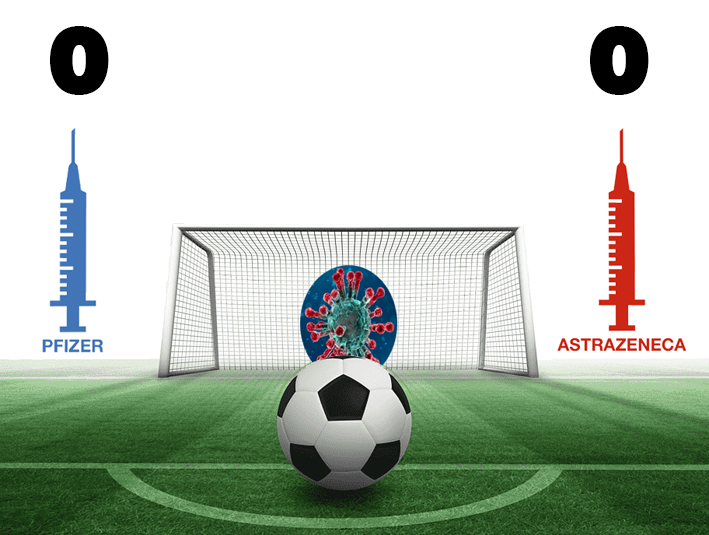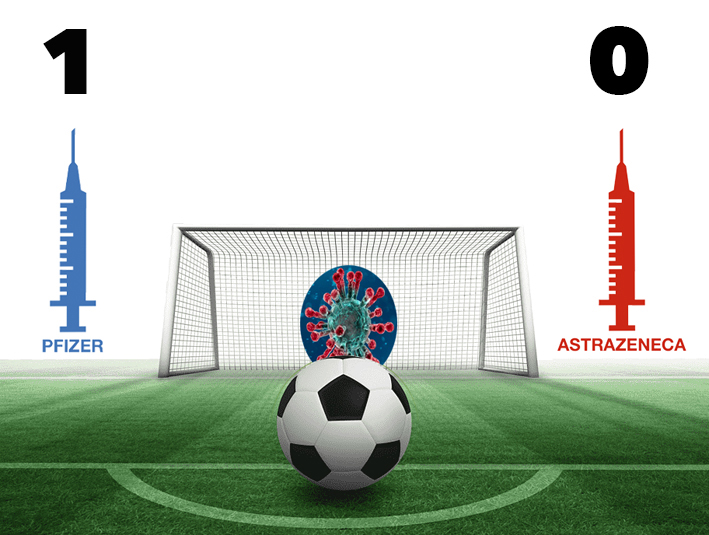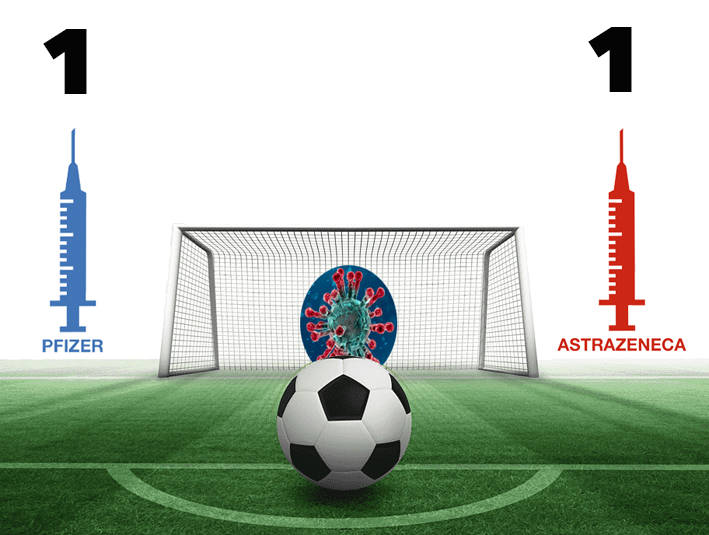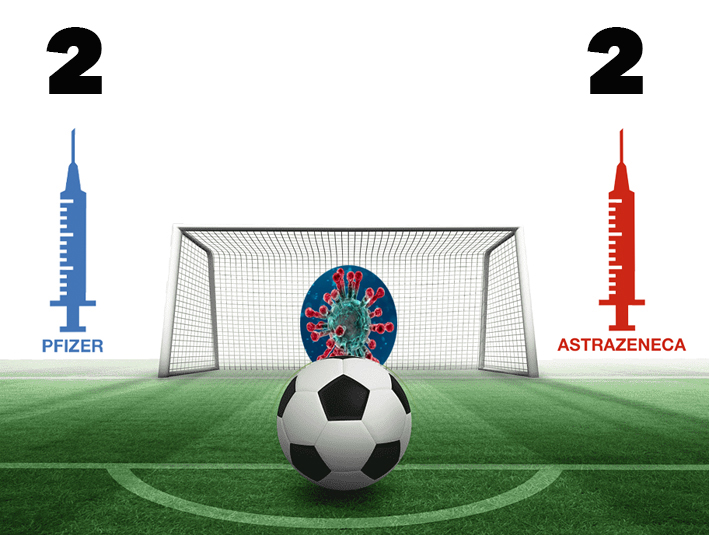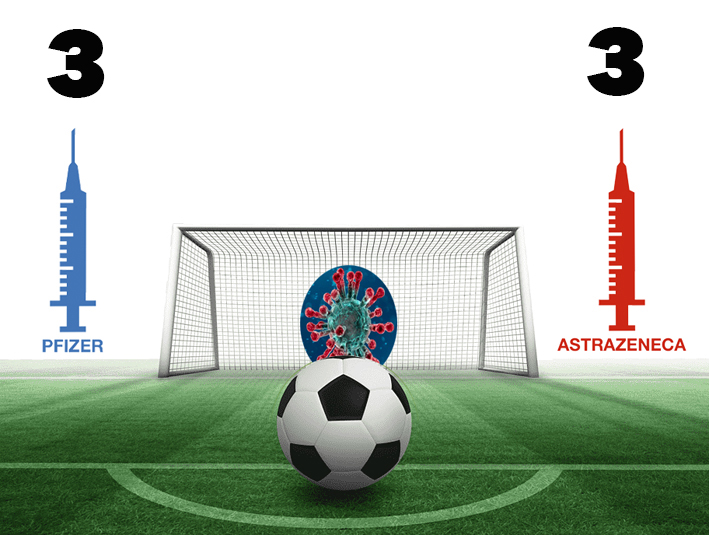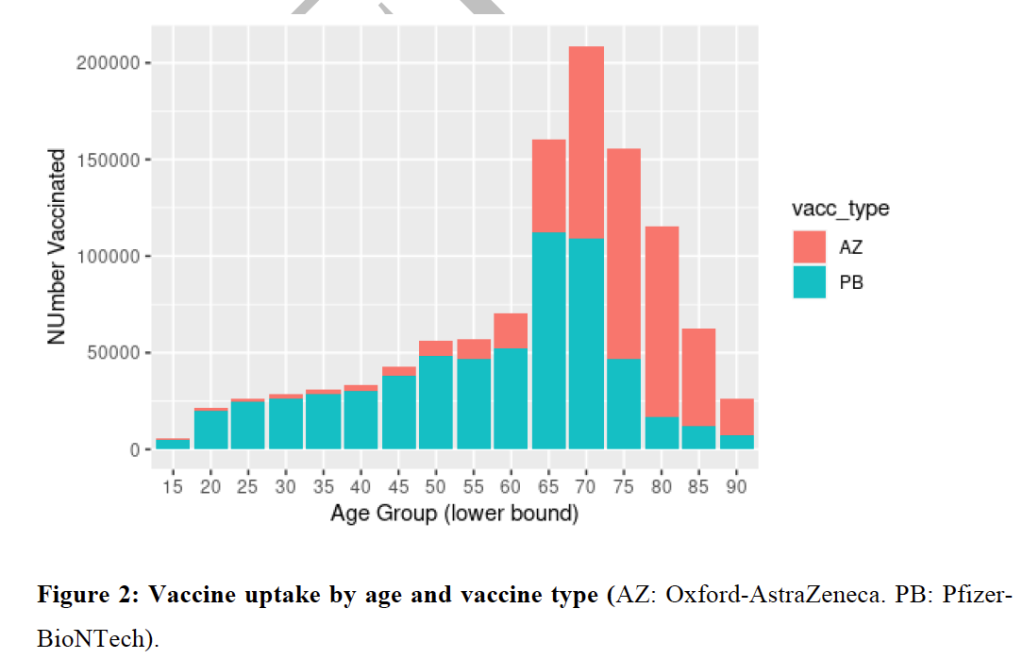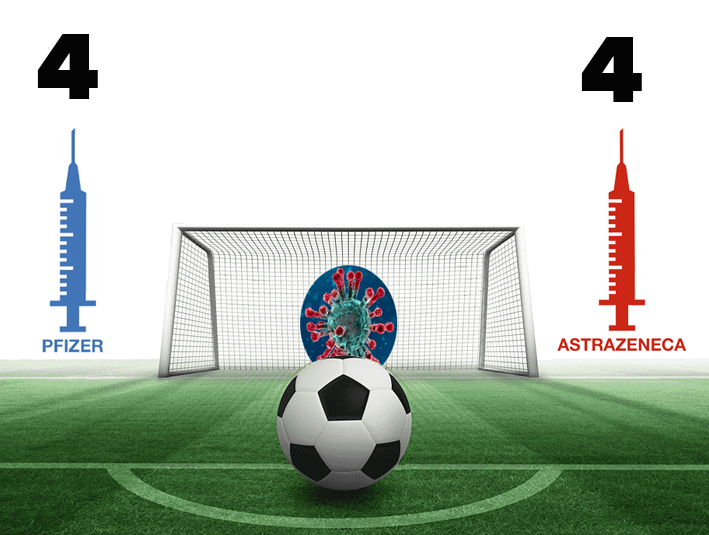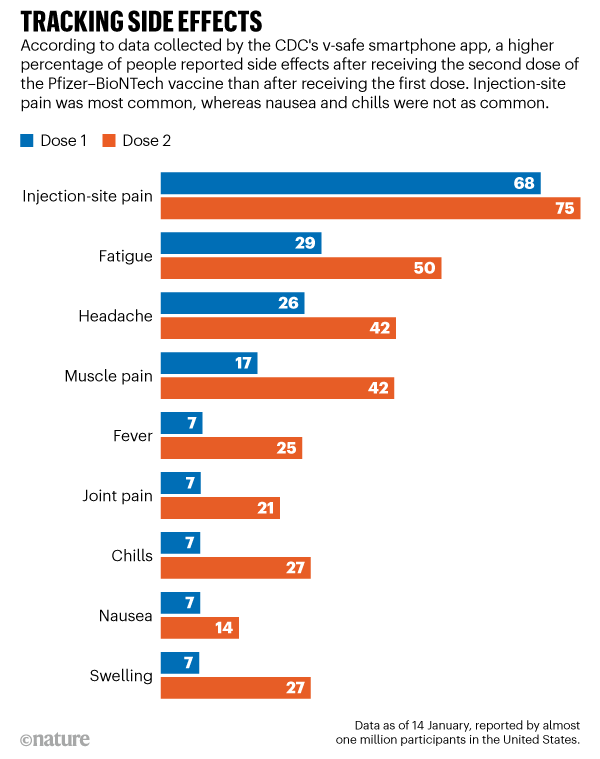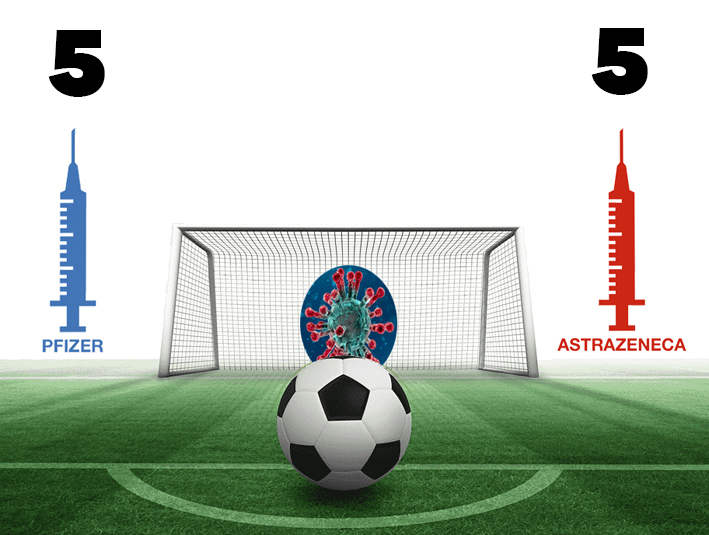The SARS-CoV-2 virus affects humor but does not destroy it. During the pandemic, we have seen memes drawing transient smiles on faces tired of waiting for the return of all those normal things that sustained our happiness. However, some of these memes are not so funny to those affected by the joke. Something like this happens with people receiving, or waiting to receive, the AstraZeneca vaccine, a target of parodies in its comparison with that of Pfizer.
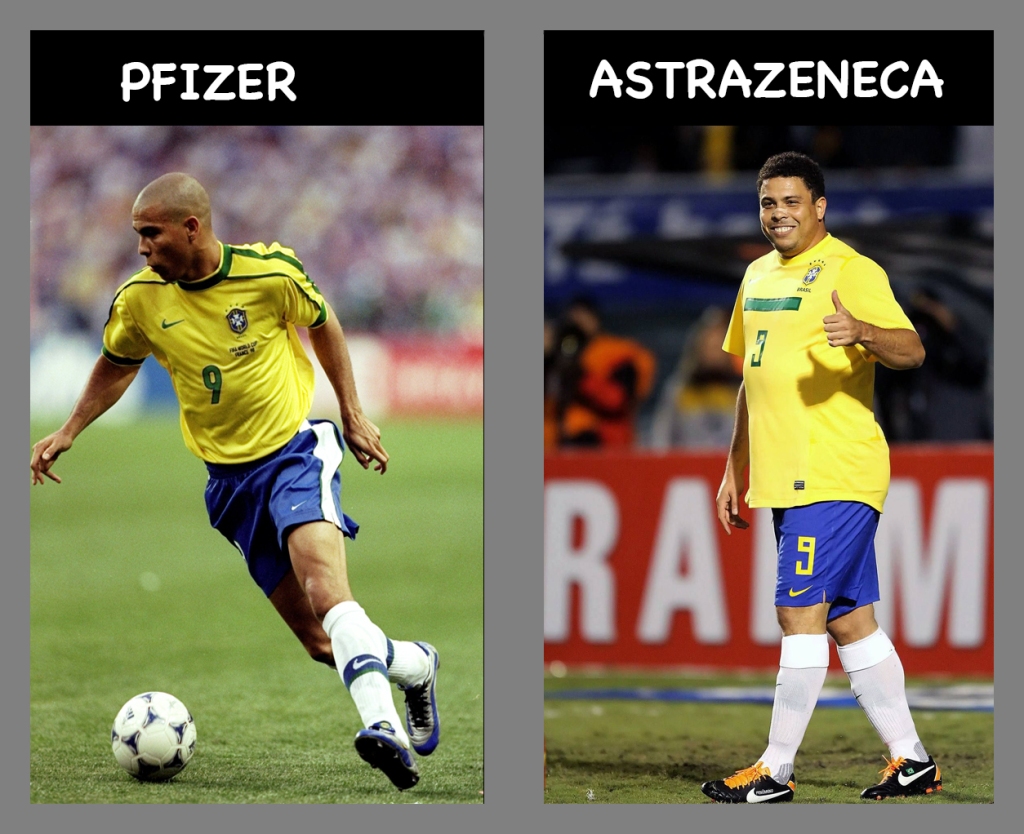
But how true is this? Is the joke justified?
Are the Pfizer and AstraZeneca vaccines so different?
We will try to solve this question shooting penalty kicks. Let’s go!
PENALTY 1: CLINICAL TRIALS
PFIZER: 21,720 vaccinated, 42% older than 55 years, 95% effective.
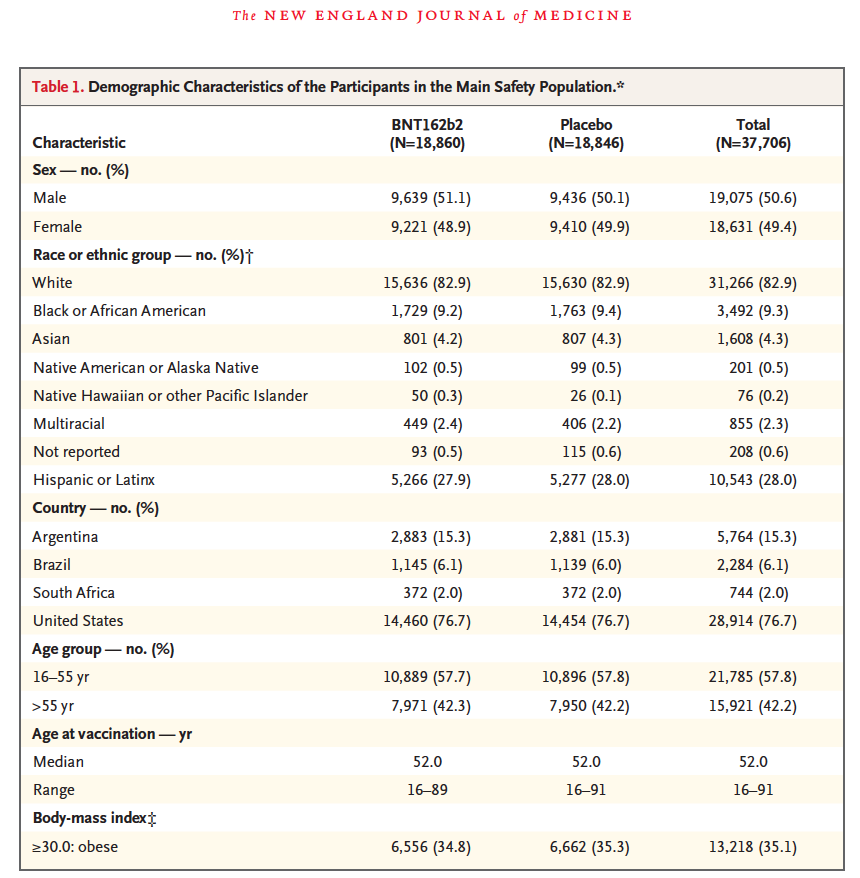
Link to the article in New England Journal of Medicine
GOAL
ASTRAZENECA: 5,807 vaccinated, only 12% older than 55 years (4%> 70 years). After an adjustment of the first dose, they show 90% efficacy.
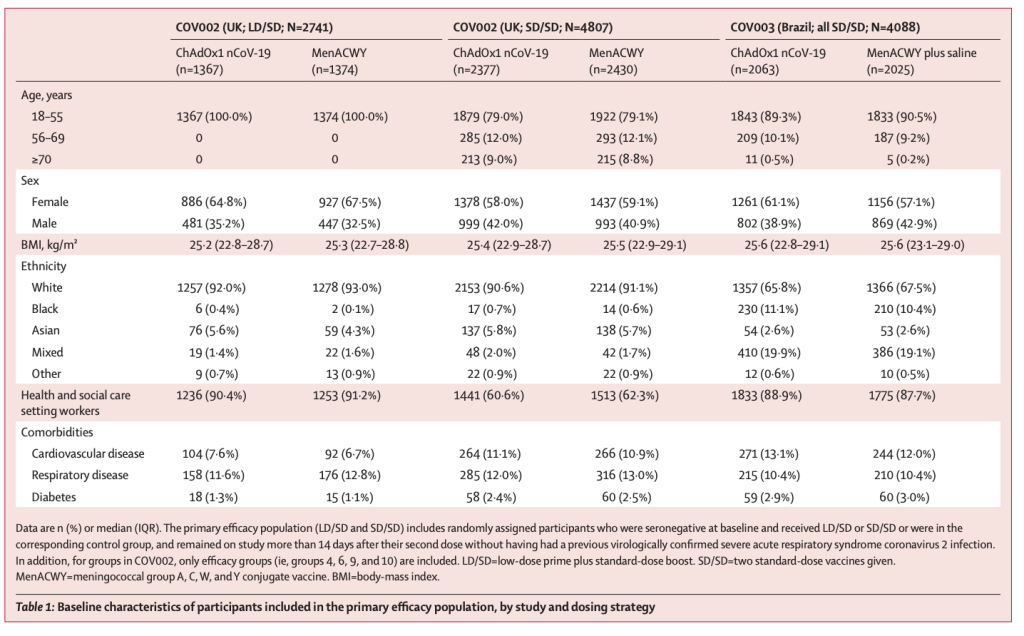
Compared to that of Pfizer, the AstraZeneca clinical trial fell somewhat short and raised doubts in the vaccination of people over 55 years of age (12% of the sample in AstraZeneca vs 42% in Pfizer). This may be the source of the AstraZeneca vaccine’s bad reputation. On the other hand, others may find it prudent not to vaccinate a high percentage of older adults in a clinical trial. In any case, as explained below, AstraZeneca has recovered from this “failure”.
FAIL
PENALTY 2: COLLABORATIONS WITH UNIVERSITIES
PFIZER: They have not collaborated much with academic institutions only in the clinical trials phase.
FAIL
ASTRAZENECA: The University of Oxford has been involved in the project from the beginning.
The involvement of academic institutions can give AstraZeneca a positive point. This may not be enough to concede a goal to AstraZeneca but updated data on AstraZeneca vaccine’s efficacy is. Millions of people have already been vaccinated with the AstraZeneca vaccine and now the WHO, and some governments like the French or the German, have recently approve its use in people older than 55.
Link to the guidance from the World Health Organization
GOAL
In football terms, let’s say that AstraZeneca had a weak preseason but regained its tone and is ready to compete. Something like this happened to Romario in the summer of 1994 when, after winning the World Cup in the USA, Cruyff asked him to join the roster on August 1. Romario arrived late. He landed in Barcelona on the 24th, began to climb mountains with the physical trainer, and was part of the starting team on September 4 against Sporting de Gijón. The «baixinho» Romario had the quality, and he just needed time to do his things in Brazil, like opening a brewery.
PENALTY 3: COMPOSITION OF VACCINES
PFIZER: Uses RNA to produce the spike protein (or S protein) of the virus, and this protein activates the immune system. This RNA is safe and is encapsulated in biocompatible nanoparticles.
GOAL
ASTRAZENECA: The spike protein is produced from DNA, which enters the nucleus of cells with the help of a benign adenovirus similar to others used with success in distinct vaccines.
GOAL
Link to types of vaccines infographics (New York Times)
PENALTY 4: RESPONSE TO VARIANTS
As mentioned above, both the PFIZER and ASTRAZENECA vaccines produce spike proteins to activate the immune system.
Virus mutations at the spike protein improve its transmission and its capacity to evade the immune system’s action. This protein is responsible for anchoring the virus to the receptors of the membranes of human cells. For example, look to this study of the N439K mutation, which changes one amino acid for another, recently published in the journal Cell (link to the article).
Therefore, doubts are raised about how vaccines would work against the virus’s variants with mutated spike proteins. On this, there is three good news:
1- Variants of SARS-CoV-2 could reduce the efficiency of vaccines but not eliminate it.
2- Vaccines activate two things in the immune system to attack SARS-CoV-2: the production of antibodies (from B lymphocytes) and the production of T cells (killer cells). Well, a recent study (March 1, not yet peer-reviewed, but done in prestigious research groups) proposes that virus variants do not affect T-cell activity. Link to study
3- Both Pfizer’s and AstraZeneca’s vaccines could quickly redesign the RNA and DNA of their vaccines to accommodate variants. In fact, Moderna has just announced that it is already modifying his (based on RNA) to adapt it to the South African variant.
In short, virus variants are a cause for concern but not for panic.
Goal for each team
PENALTY 5: PROTECTION FROM SYMPTOMS, SEVERE COVID-19 AND DEATH
Millions of people are being vaccinated with the two vaccines around the world. As of today, March 3, the UK has vaccinated 20 million people. They vaccinate at a rate of 300,000-400,000 people per day. This has led to some preliminary studies, with tens of thousands of cases studied, demonstrating that both vaccines confer protection with a single dose. For example, in Scotland, after the first dose to more than 100,000 people over 65 years of age, the PFIZER and ASTRAZENECA vaccines were protecting from hospitalisation with an efficacy of 85% and 94%, respectively. In fact, in Scotland, more people over 65 have been vaccinated with Astrazeneca’s vaccine than Pfizer’s (see graph below). (Link to the study).
Link to an English study similar to the Scottish
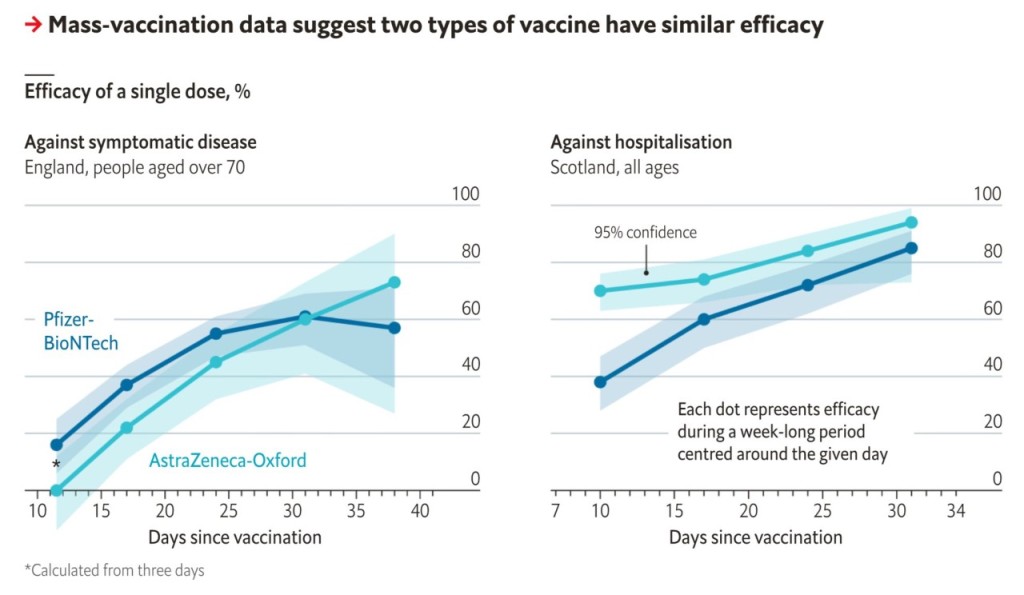
In summary, the two vaccines have been injected into people over 65 years of age. They already confer protection with a single dose, and both protect 100% from COVID-19 mortality (something we already knew from clinical trials). We will need to wait few months to compare their efficacies after the second dose, but the present data is very promising for both vaccines.
Goal for each team
PENALTY 6: SIDE EFFECTS
As of today, about 8 million people have been vaccinated with the Pfizer vaccine and nearly 7 million with the AstraZeneca vaccine. According to a recent report from the UK government, the proportion of people experiencing side effects (fatigue, headache, mild fever) is similar for the two vaccines. These side-effects are relatively common (about 50%) with both vaccines, as shown in clinical trials. Severe side effect cases are below 0.5% for the two vaccines. Using the Pfizer vaccine, side effects are more frequent after the second dose (fatigue in up to 50% of those vaccinated) (see figure below, taken from an article in Nature). AstraZeneca vaccine seems to produce effects more frequently in the first dose than in the second, but this will be confirmed as the number of people who receive the second dose increases. The second AstraZeneca shot is applied later (10 to 12 weeks after the first dose) than Pfizer’s second dose (3-4 weeks).

For AstraZeneca vaccine, when compared with the first dose, adverse reactions reported after the second dose were milder and reported less frequently. (SOURCE: UK goverment)
The penalty for side effects could be a failure for both vaccines, but these symptoms are common in vaccination processes. In any case, it’s much better to spend a day or two with side effects in a controlled manner than suffer a SARS-CoV-2 virus infection. Thus, we are going to concede a goal for each team because side effects seem less intense and less frequent in older people. Therefore, if you have side effects, you can always say that you are a youngster.
Goal for each team
There is no reason to keep looking for the tiebreaker. In fact, no study has been done comparing different vaccines in the same population sample (except those in England and Scotland commented above). Both vaccines serve to protect you from a severe COVID-19, and both serve to contribute to herd immunity because you will stop being a transmitter of the disease, or at least you will be less transmitter (there are no formal and reliable studies – as far I know – on this aspect yet, but it is expected that your infective capacity will be at least much lower if your immune system stops the virus).
So, if somebody asks if you got the fat Ronaldo’s vaccine or the athletic Ronaldo’s vaccine, you can tell them that you got the vaccine of the winning Ronaldo, the one from the world champion, to help your team to win.
@raticosdefutbol
@ceronlab
ANNEX:
VACCINE DOSES SECURED BY THE EUROPEAN UNION

More COVID-19 TOLD THROUGH FOOTBALL IN THIS BOOK:

